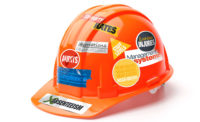 Many safety pros are exasperated by their senior leadership’s slavish devotion to tracking OSHA recordables, lost-time incidents, severity rates and fatalities. In a way, you can’t blame them when their pay bonuses are based on these numbers, and the numbers represent pretty much all senior leaders know about safety.
Many safety pros are exasperated by their senior leadership’s slavish devotion to tracking OSHA recordables, lost-time incidents, severity rates and fatalities. In a way, you can’t blame them when their pay bonuses are based on these numbers, and the numbers represent pretty much all senior leaders know about safety.
The Center for Safety and Health Sustainability has proposed to the Global Reporting Initiative (GRI), the non-profit group that publishes scores of indicators to show how sustainable corporations are “behaving,” a set of occupational safety and health indicators for inclusion in the overall group of sustainability indicators. Tom Cecich, chair of the board for the Center, explained at ASSE’s Safety 2013 that these new indicators are most importantly, operationalized in terms of definitions, and quantifiable.
You may want to consider adding them to your own dashboard of leading and lagging indicators. Here are three:
-Percentage of owned or leased work locations that have implemented an occupational health and safety management system that meets recognized standards.
-Percentage of owned or leased work locations that have had their occupational safety and health management systems audited by an independent third party.
-Percentage of direct or first-tier suppliers ’facilities in developing countries that were audited for compliance with health and safety standards.





